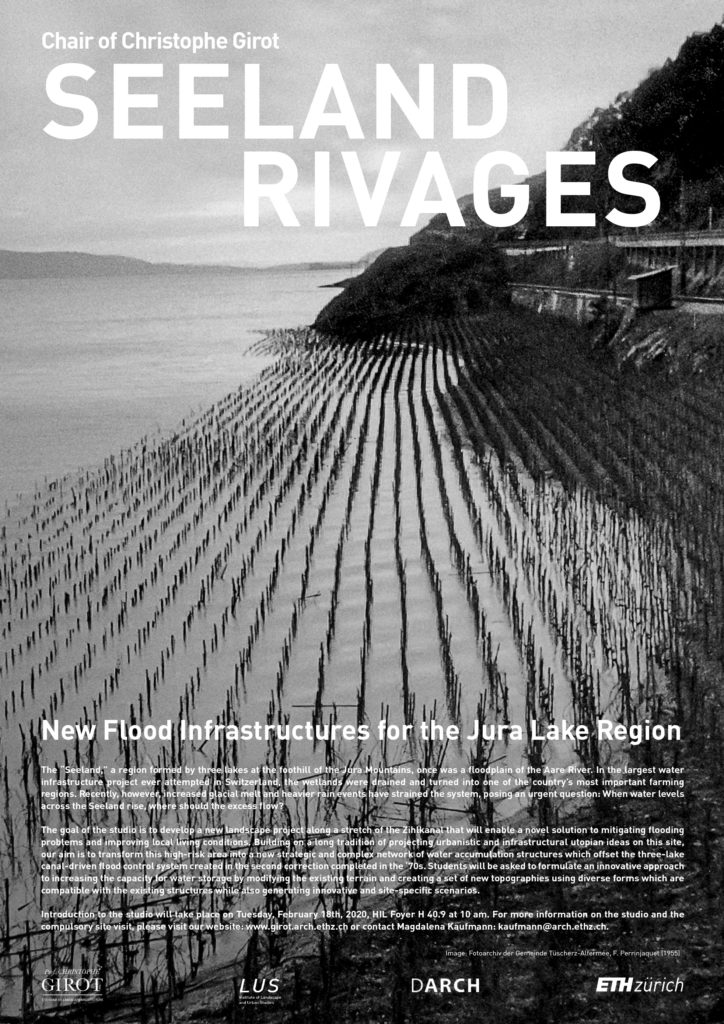
STUDIO
The FS 2020 Studio “Seeland Rivages” asked the students to design and develop a new landscape topology that will enable a novel solution to mitigating flooding problems and improving local living conditions in the Seeland.
GUEST LECTURERS
Werner Könitzer | Former Governor of Nidau/Biel; Bernhard Schudel | Head of the water regulation department of the canton Bern
ASSISTANTS
Magdalena Kaufmann, Lara Mehling, Benedikt Kowalewski, Julian Fischbacher
STUDENTS
Marco Busarello, Siyi Dai, Tina Ewald, Sandro Fischer, Mario Kalberer, Michael Krummenacher, Joel Mariéthod, Philip Meile, Serena Neuenschwander, Fabio Neuhaus, David Riedo, Sacha Stettler, Julia Tary, Dylan Torri, Jingfan Xue, Michael Zuber
New flood infrastructures for the Jura lake region
Three lakes at the foothills of the Jura Mountains form a region called „Seeland.” The landscape was carved by the retreat of the Rhone Glacier about 15,000 years ago and inundated by the Aare River, which enters the plateau at Aarberg and once created vast wetlands connecting the three lakes. To make this land arable and resistant to frequent flooding, the largest wetland drainage operation ever attempted in Switzerland was undertaken. The first major water correction (1868–1891) saw the construction of four canals connecting the three lakes to generate a buffer zone, capable of absorbing waters of the Aare in the event of any upstream flooding. After severe flooding in the 20th century, a second correction (1962–1973) was undertaken to widen and deepen the canals, as well as introduce the Flumenthal Dam to regulate the Aare further downstream, just beyond its confluence with the Emme. Today, the Zihlkanal (Thielle Canal) between Lake Biel and Lake Neuchâtel functions more like an estuary than a river; it can flow in either direction in order to equalize water levels. Recently, however, increased glacial melt and heavier rain events have put additional strain on the system, initiating discussions about a third correction: when water levels across Seeland rise, where should the excess flow?
The goal of the FS 2020 studio is to develop a new landscape topology that will enable a novel solution to mitigating flooding problems and improving local living conditions.
In addition, the area between the three lakes has a long history as a site on which visionaries have projected unrealized utopian ideas of urbanization and infrastructure. There is good reason to believe that the high-risk stretch along the Zihlkanal could be transformed into a new strategic and complex network of water accumulation structures which offset the three-lake canal-driven flood control system created in the second correction.
Students will be asked to formulate an innovative approach to increasing the capacity for water storage by modifying the existing terrain and creating a set of new topographies using diverse forms which are compatible with the existing structures while also generating innovative and site-specific scenarios at multiple scales. The landscape design method used will be that of topology that has been developed and refined at the Chair over the past decade. Analog design tools will be combined with digital design tools and fabrication, which will be taught in a series of workshops including 3D and point cloud modelling, visualization techniques, and CNC prototyping to guide students in developing their own landscape design strategies and methods.
Virtual flight through the point cloud of Seeland along the Zihlkanal. From mound at Lake Neuchâtel to the mound of Lake Biel
Remote Teaching
How to make online teaching fun? How to find a balance between enough and not too many virtual studio meetings? Milanote and peach kucha.
Likemost of the studios, we are using Zoom to communicate with the students, Google Drive to maintain up-to-date critique schedules, interactive lists, etc. and Milanote to emulate the pin boards of the virtual studio space.
One thing that we have been figuring out is how to find the right balance of large-group meetings. While we found it important to have some sort of check-in in the morning and evening to mark the beginning and end of studio days, we also noticed that after a whole day of desk critiques, workshops and lectures, additional student presentations in the evenings for wrapping up the day might be too much.
While the communication within the studio found a good pace, the many engagements actually limited the students’ working time. Based on one student’s suggestion, we tried the shorter pecha kucha presentation format and found it to work very well. The students seem to like it and they are more focused and motivated. Generally, we think that involving the students by asking them to come up with ideas to make the virtual format more fun and moderate wrap-ups brings more interaction in the group.
Blog Entry by Magdalena Kaufmann
Vegetation Lecture by Lara Mehling
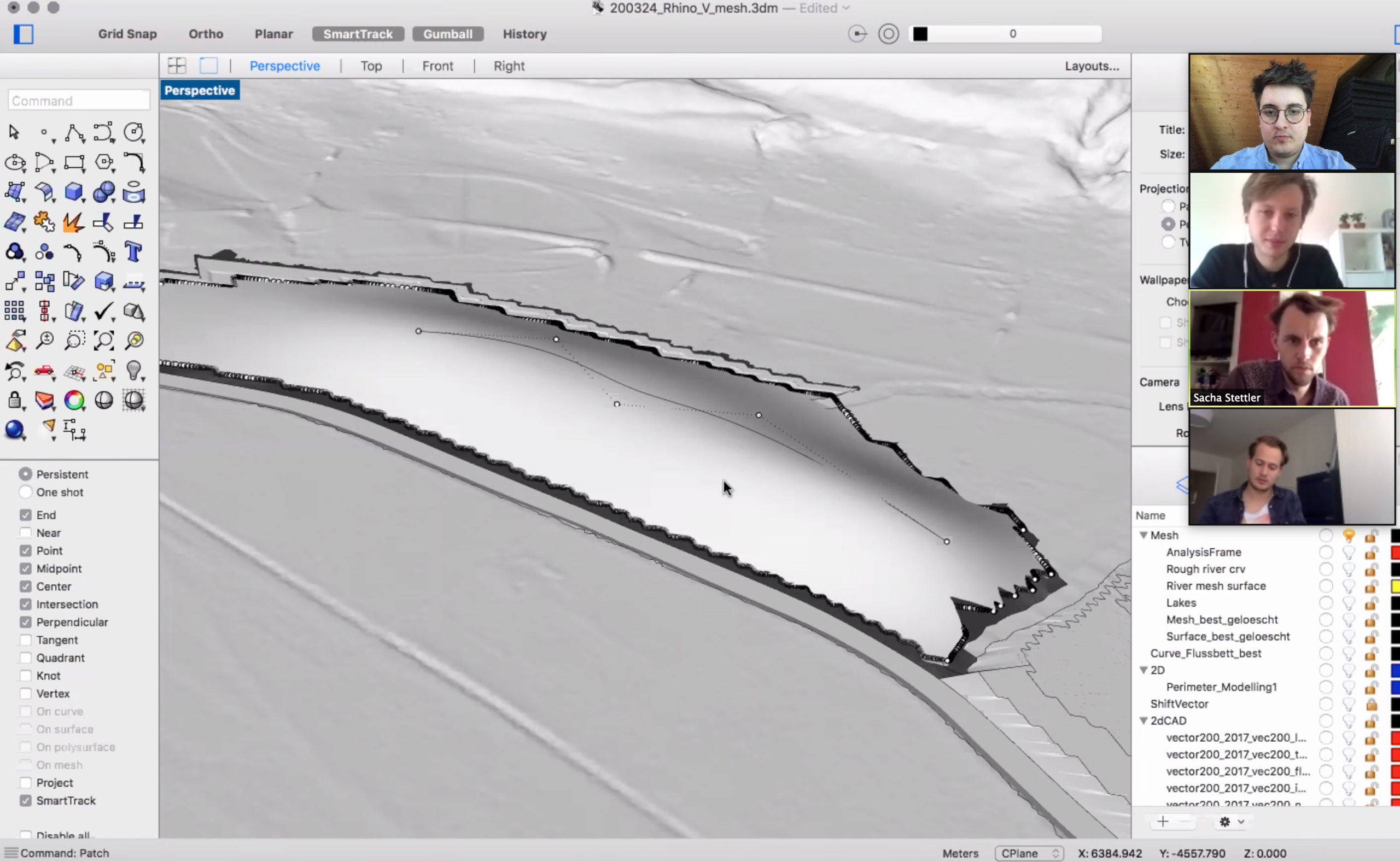
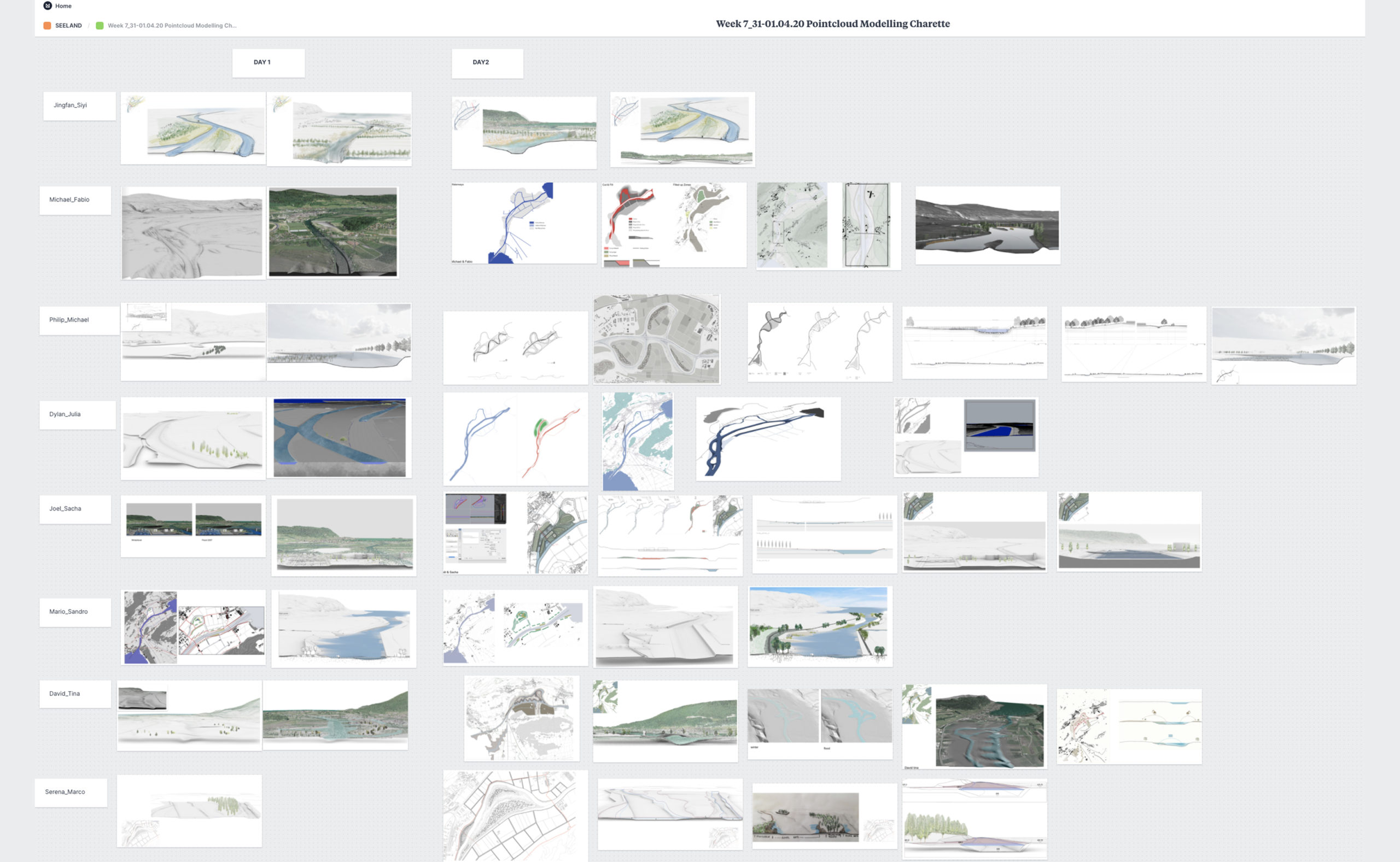
Technical Helpdesk with Benedikt Kowalewski & Julian Fischbacher
Students Work
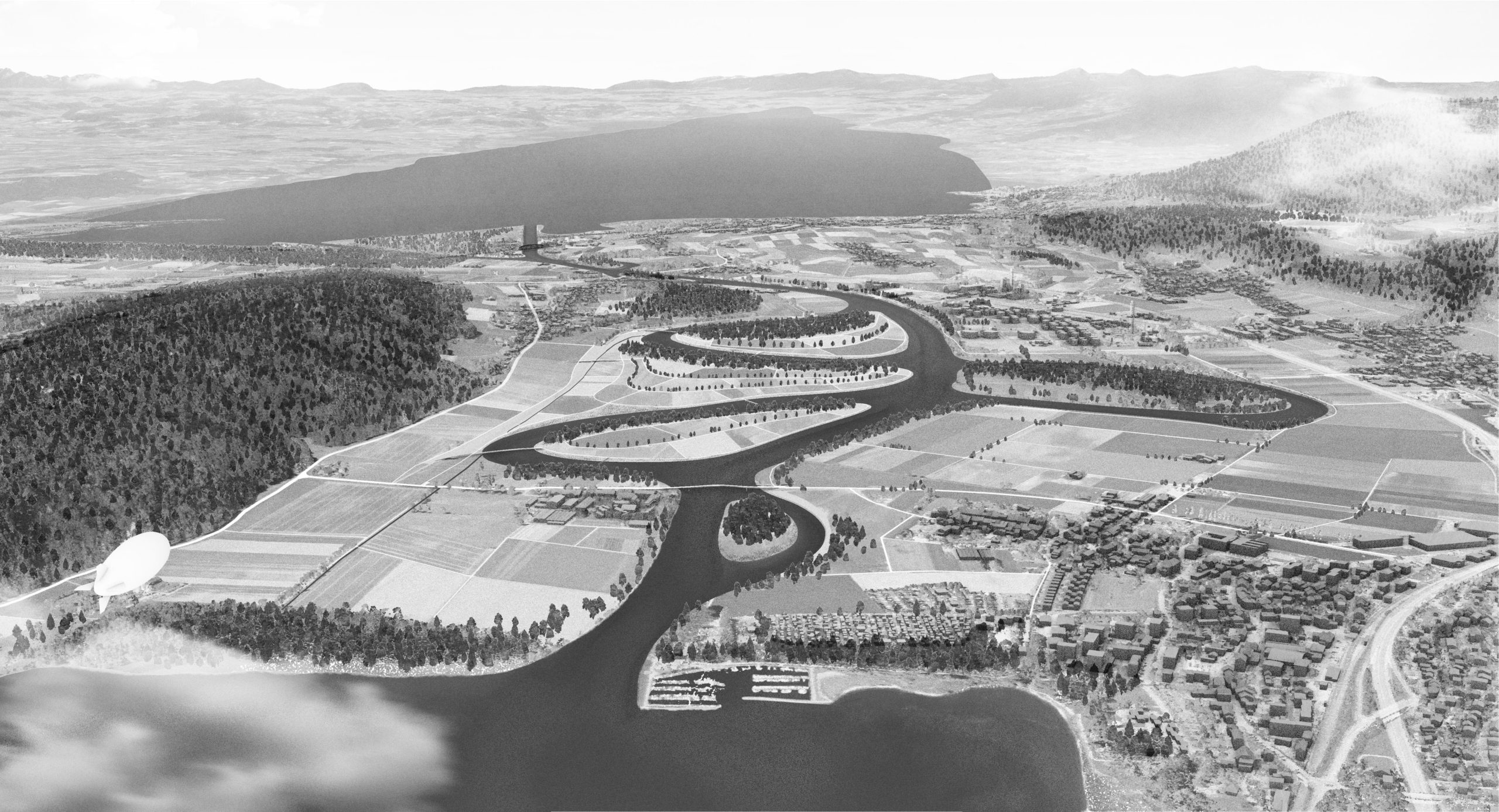
Co-Existence, Birdseye Perspective | Philip Meile & Michael Zuber
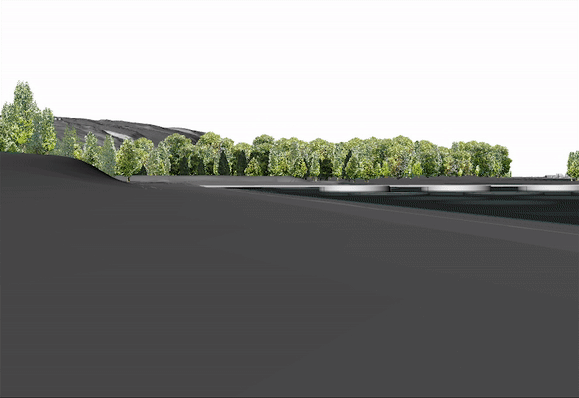
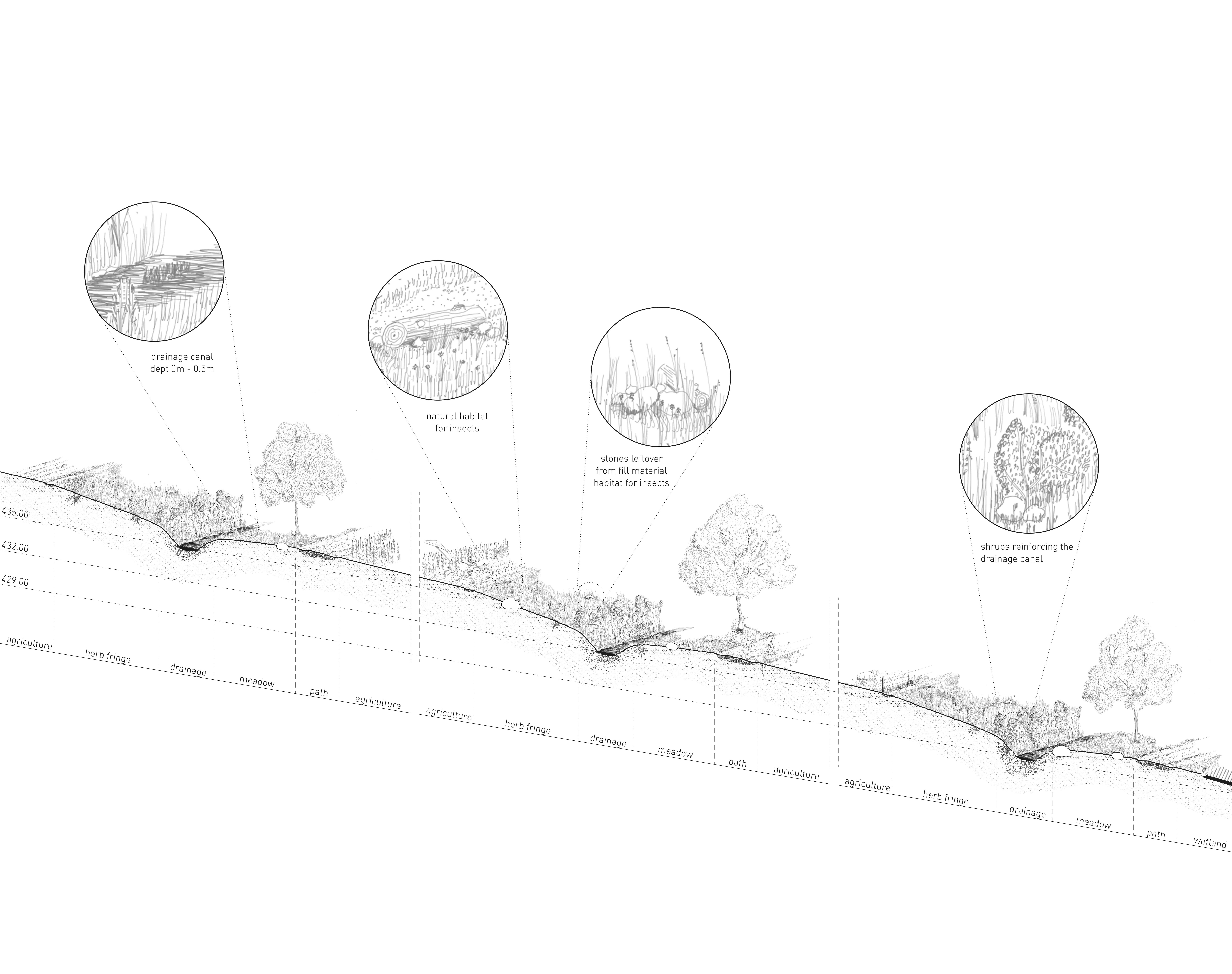
Coeur d’Eau | Sacha Stettler & Joel Mariéthod
Coeur d’Eau | Sacha Stettler & Joel Mariéthod
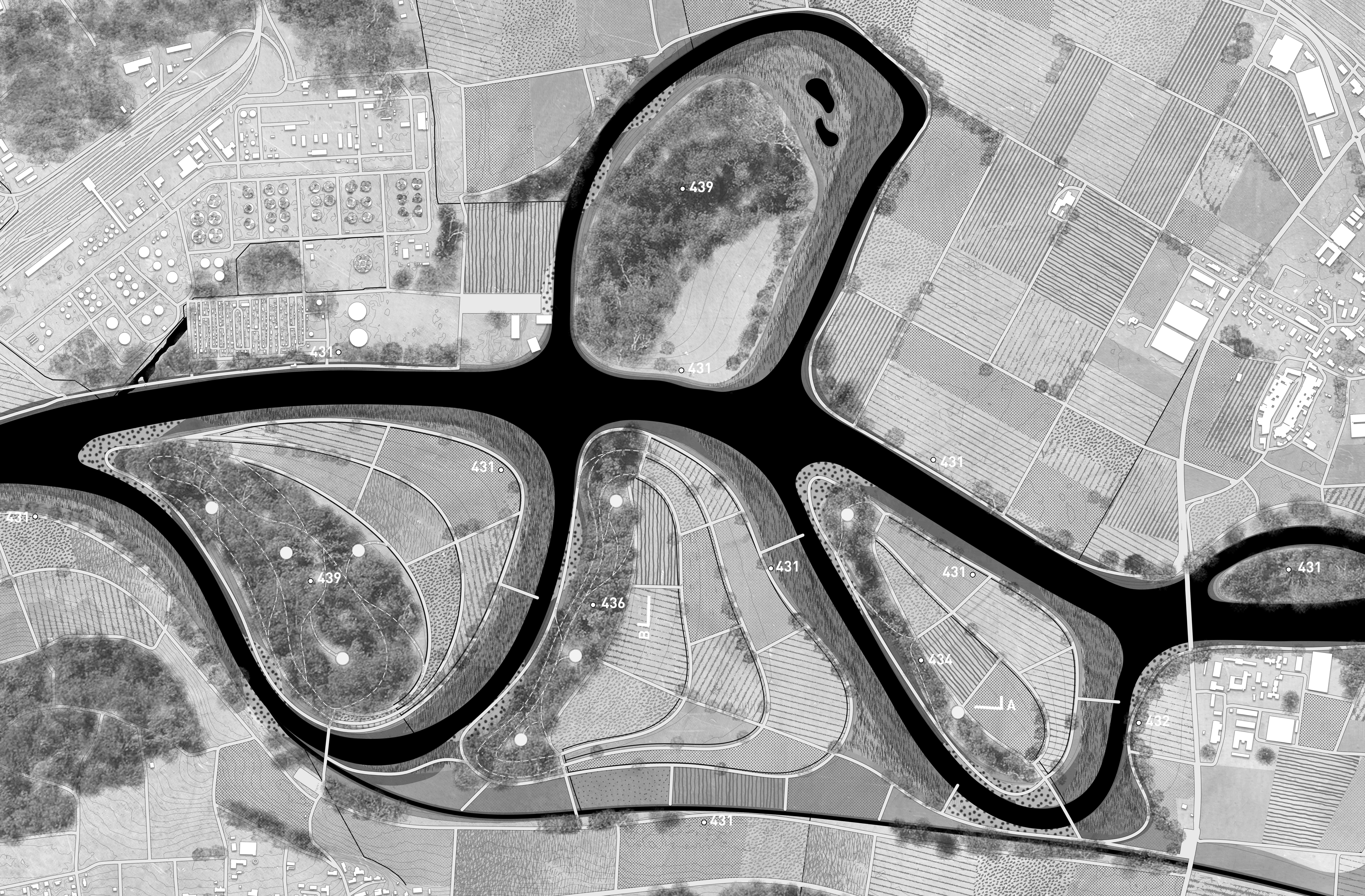
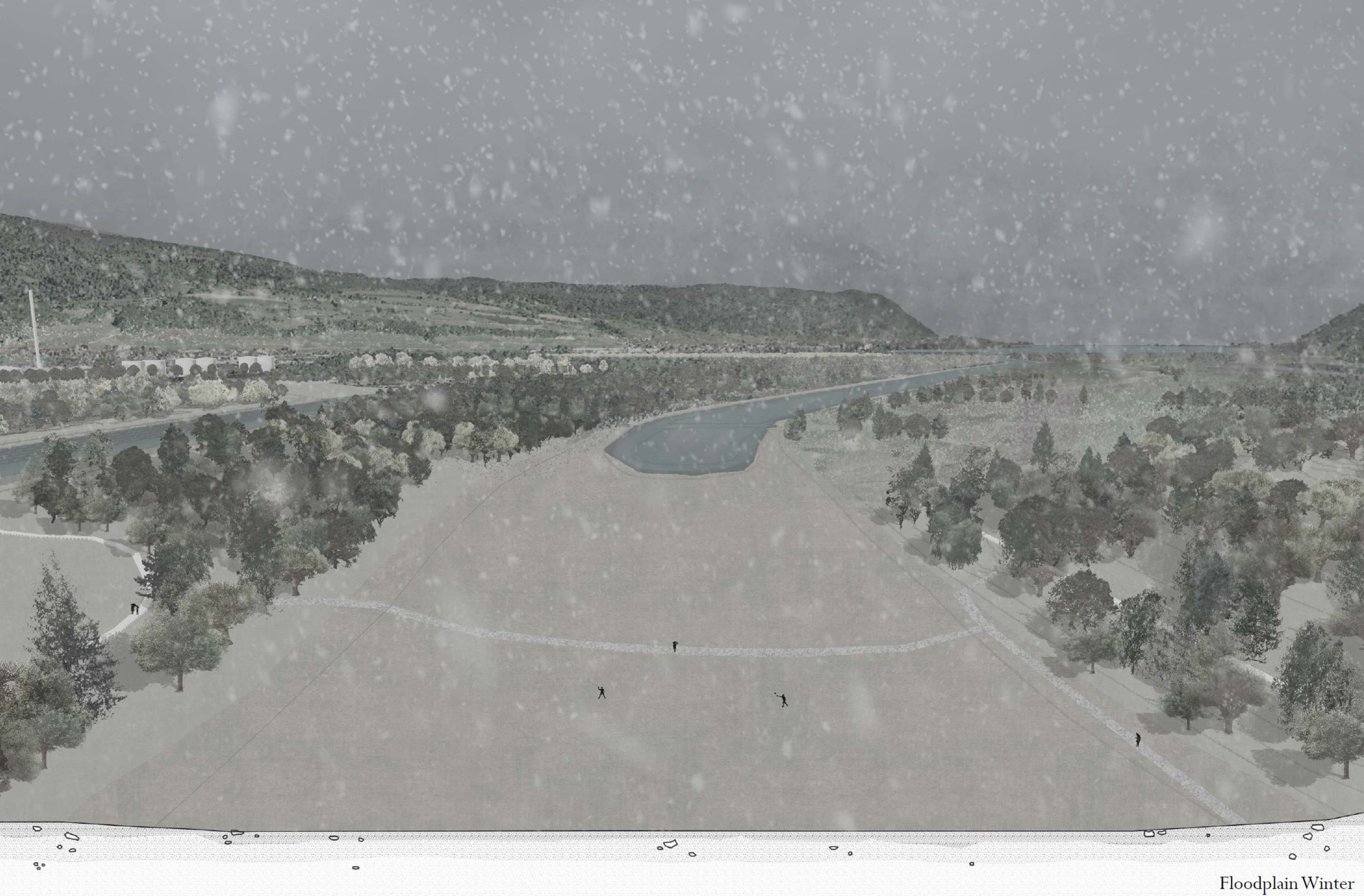
Co-Existence, Focus Plan | Philip Meile & Michael Zuber
New Land, Section Perspective | Julia Tary & Dylan Torri

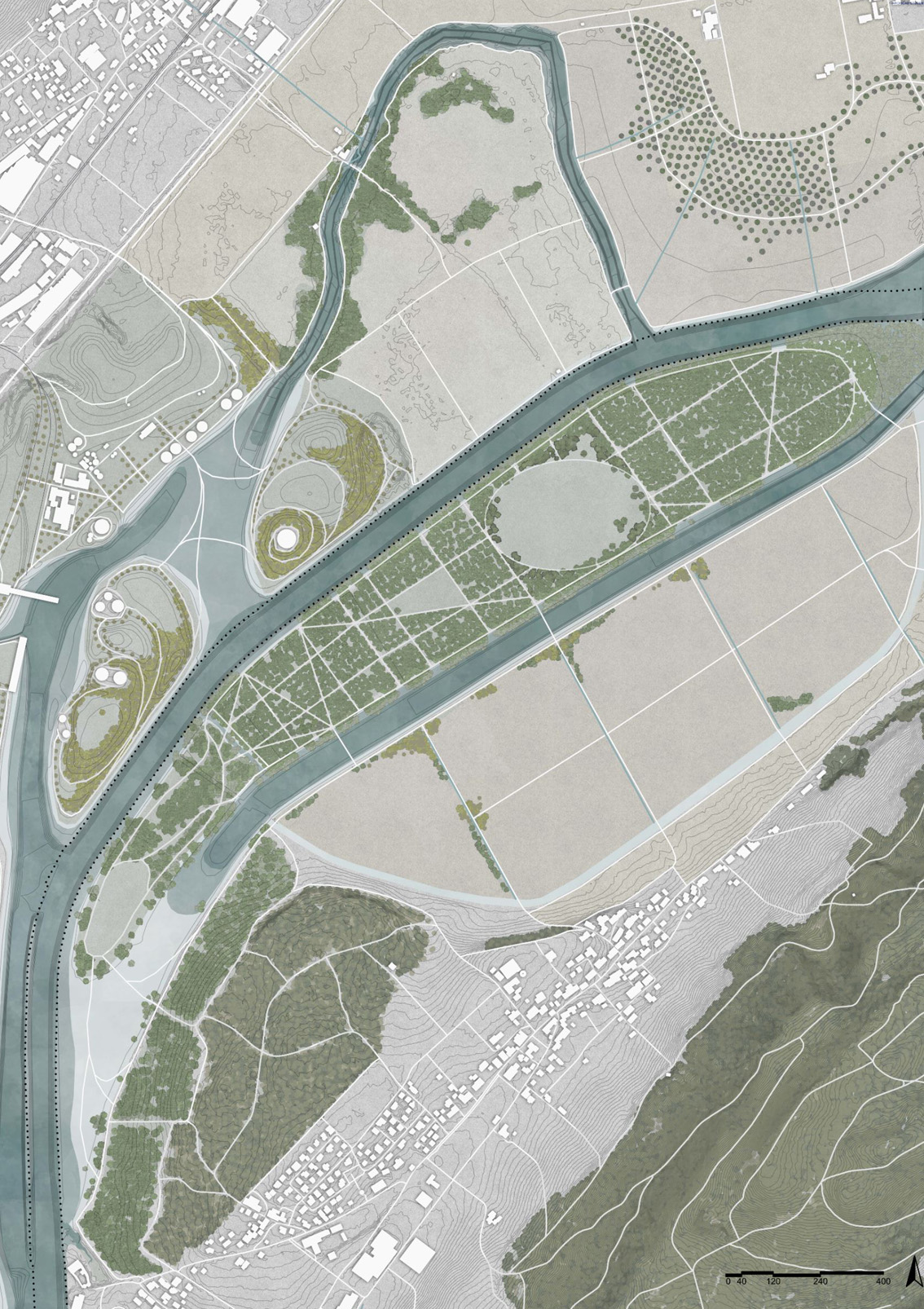
Coeur d’Eau | Sacha Stettler & Joel Mariéthod
New Land, Section Perspective | Julia Tary & Dylan Torri
Final Presentation
On Tuesday, 26th of May we finished the Seeland Rivage studio. It was a very special semester. After a few weeks, the studio was disrupted by the coronavirus pandemic and we had to change to online mode from day to day. It was not easy for us to adjust the studio to the new situation. One particular challenge was to keep up the team spirit within the student groups while we were all physically separated. Another challenge was to teach software programs online, since this typically requires a more interactive style of teaching. But the effort was worth it, and after looking at the results presented at yesterday’s final critiques, I might say: it was magic.
We found that online teaching opens up new opportunities. Since none of us had any experience with this situation, we enabled the students to shape the form of the studio by asking them for feedback and suggestions. We experimented together to make the studio a good experience for all of us.
We, the teaching team, would like to thank everyone for their efforts, including our students and the guests who shared their interesting and refreshing points of views to the projects.
The final output of the studio can be explored on our Milanote pinboard.
Blog Entry by Magdalena Kaufmann
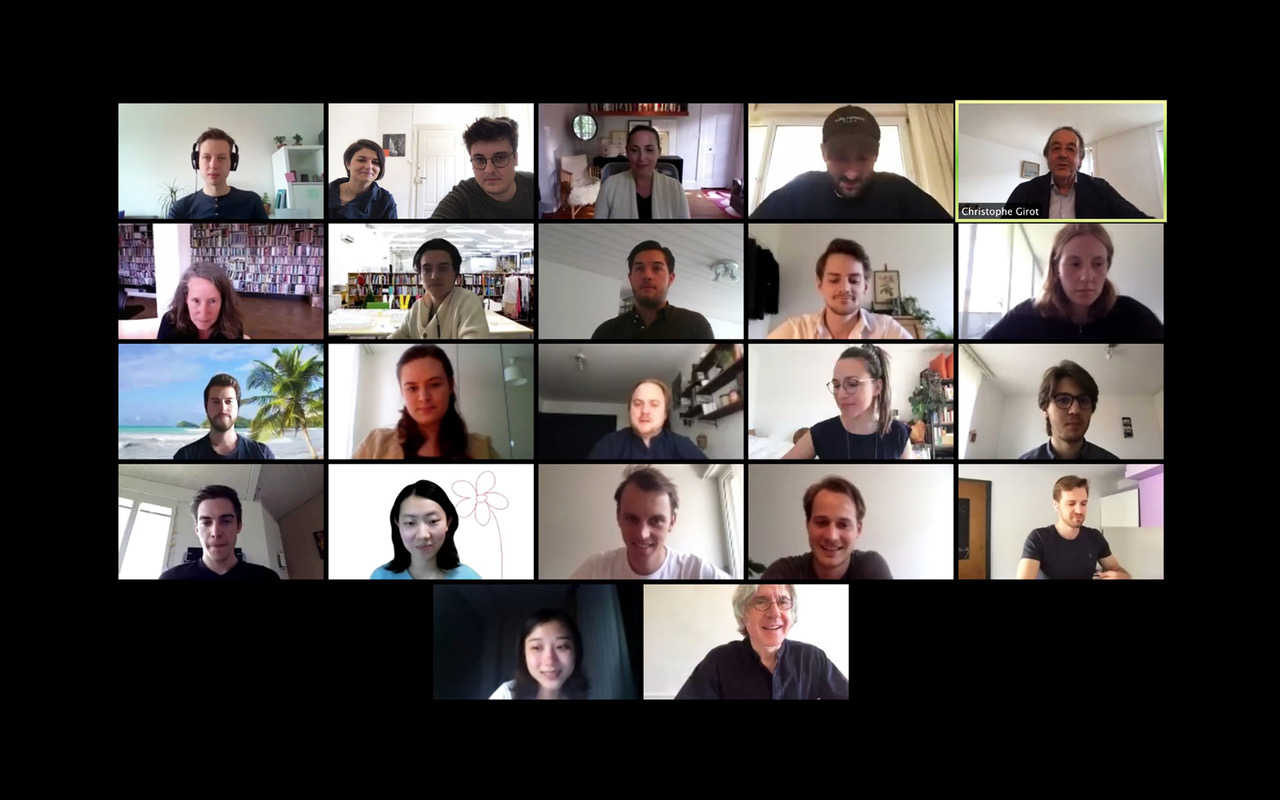
Invited Guests
Michel Desvigne, Landscape Architect based in Paris, France
Rosetta S. Elkin, Associate Professor of Landscape Architecture at Harvard University’s Graduate School of Design, Cambridge, USA
Kelly Shannon, Professor of Urbanism and Landscape, Department of Architecture, KU Leuven, Belgium

